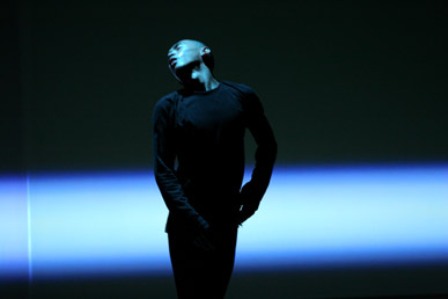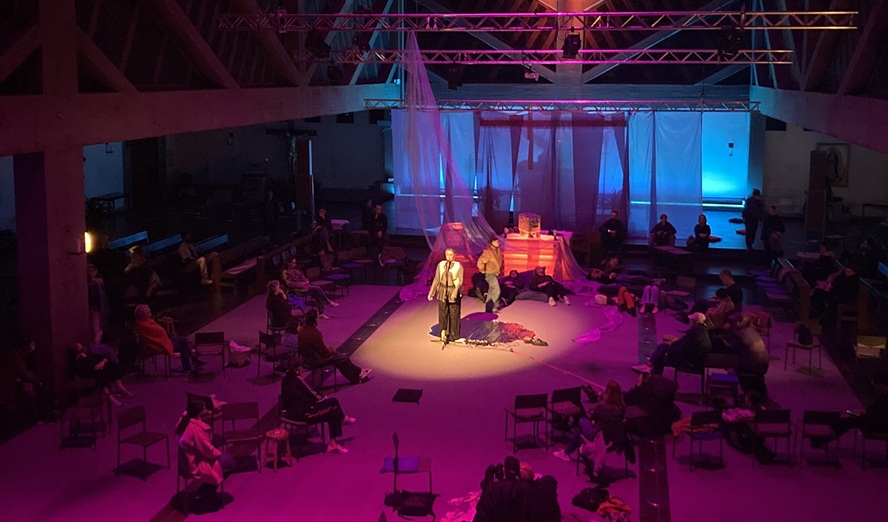How did you get involved in dance?
Hiroaki Umeda: I studied photography at the Nihon University and during that time I was trying to get to know many different art forms and discovered dance.
So you took pictures of dancers?
No. I was just stressed by photography and wanted to express things in real time.
Your company was founded in the year 2000. The company is called ??S20??, what does ??S20?? stand for?
When I started to dance I bought an AKAI S20 music sampler. Most musicians use the S2000 model, I could only afford a very cheap one.
You are also doing performances outdoors, in public spaces. What’s the difference between dancing outside and dancing inside a building?
Actually I don’t like to dance outside. I think when I dance it is important to get an idea of the space that is surrounding me, the shape of the room. Outside it is difficult to get a hold of the space and the sound. Also the feeling of the air is so different outside.
Creating a unique space is important for your performances. Here are two Japanese words for space, ma and harrapa, could you explain them?
Ma is a concept of time and space. I don’t use this word so much, it’s a word used in traditional Japanese art, it describes a philosophy of an empty time and empty space. But you cannot really talk about this kind of feeling.
And what does harrapa mean?
It is a field which is not touched by humans. When I was a child, for example, my mother said to me, ?go to harrapa to play.??
You started with photography. Do you think your experiences as a photographer influence your performances and the way you combine visual elements with music and movement?
Dance for me is a visual art. You need light. Without light you cannot see the dance. So I thought it would be better to control the lighting, the visual perception as an extension of the choreography. I try to make a visual choreography.
Music is also a very important aspect of your choreographies…
All the elements in my performances are equal. Dance is not superior, all the elements have the same value. I use dance, music and light as objects without special meanings. I try to avoid melodies in my music, the rhythmic noises are a kind of stimulation to harmonise movements, lighting and sound to create a special space.
How do you start to work on a performance?
The starting point is my impulsion. Each piece has a concept, a frame at the beginning. I can construct within this frame. But it is not the main thing.
And what comes first in the creative process: music, lighting or dance?
When I make a piece I start with a drawing, it is a kind of score. Just abstract lines nobody besides me can understand. This is my score of the space and according to these lines I am developing dance, light and sound.
Are there any main influences?
Everybody thinks I’m a HipHop-Dancer but I am not. I started to dance when I was 20 years old. I took lessons of ballet and Hip hop but I got bored very soon. I tried to find the movements on my own.
Did you train on a daily basis then?
No, and I didn’t go to studios. I just danced at my home and sometimes in the street when I walked.



















